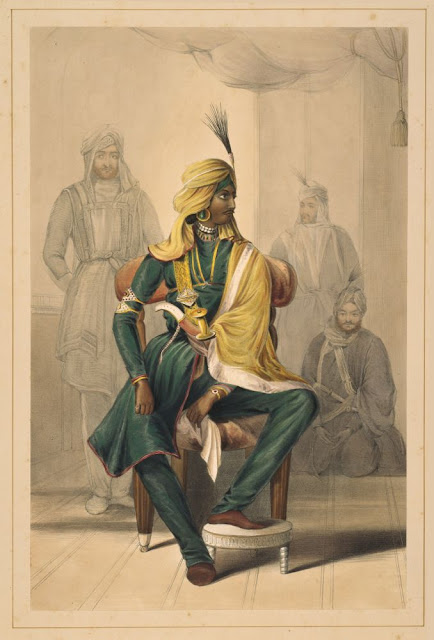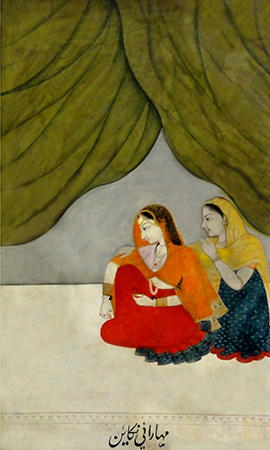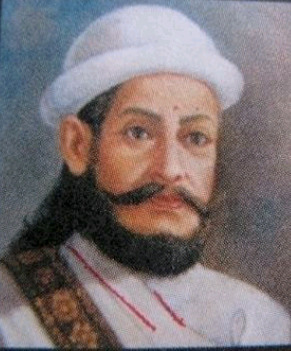NAUDH SINGH (d. 1752), son of Buddha Singh, was greatgrandfather of Maharaja Ranjit Singh. He was a brave and daring man who applied his energies to expanding the family`s fortunes. He fortified the village of Sukkarchakk in 1730, and in the same year married the daughter of a rich landlord, Gulab Singh ofMajitha. He gained territory and, impressed by the example of his personal bravery, many an adventurous youth rallied round his arms. Eventually, he, along with his band of followers, joined the Faizullapuria misland won the admiration of his chief, Nawab Kapur Singh, by his bold exploits. He was among the Sikhs who pursued Ahmad Shah Durram out of India in 1749, and he died in 1752 as a result of the injuries sustained in battle.
FATEH SINGH CHHACHHI (d. 1814), son of Tahal Singh Chhachhi, a Kohli Khatri belonging to Gujranwala district in the Punjab, served under Maharaja Ranjit Singh. He fought in the campaigns launched by the Maharaja for the conquest of Pind Dadan Khan, Pindi Gheb and Jhang and obtained considerable addition to his estates at Bharatpur, Sahival and Kunjah. He died fighting during the expedition against Kashmir in 1814.









